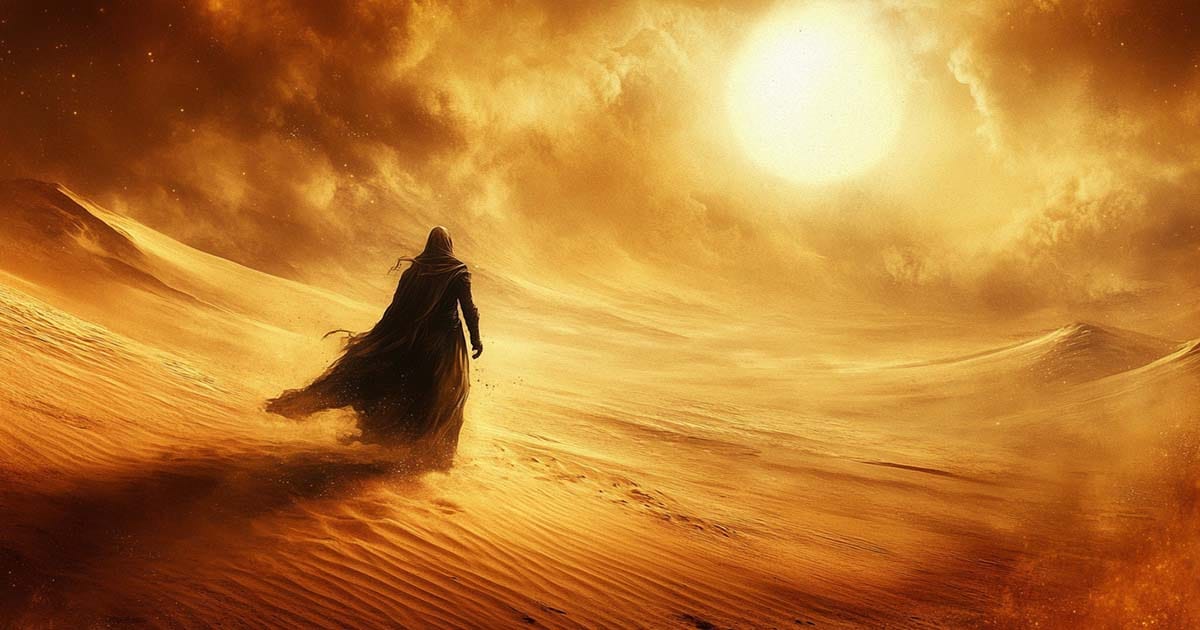The Day Dune Changed Science Fiction Forever
Rediscover how Frank Herbert's "Dune" transformed science fiction after its U.S. release in 1965. Learn about its publication journey, enduring themes, and why it still captivates readers today.

This Week in Classic Science Fiction – The First U.S. Publication of Dune in 1965
On August 1, 1965, American readers were introduced to a science fiction novel that would redefine the genre. "Dune" by Frank Herbert hit shelves courtesy of Chilton Books. The publisher was better known for car repair manuals than interstellar sagas. Despite its modest beginnings, the novel quickly found a dedicated audience.
"Dune" had already been serialized in Analog magazine, but its release in full marked a major moment in science fiction. With its deep philosophical undercurrents and complex world-building, it was not just another space adventure. It asked readers to think about ecology, power, and human nature. The book won both the Hugo and the Nebula and became a touchstone for the genre.
Though more than twenty publishers had rejected it, Herbert's vision endured. His story about a young nobleman rising to power on a desert planet struck a chord with readers in the 1960s. The book's themes of survival and destiny still echo today. Its first publication is a moment worth remembering when science fiction stepped confidently into literary territory.
Sponsor: Dune

Frank Herbert’s "Dune," first published in 1965, tells the story of Paul Atreides on the desert planet Arrakis. With themes of power, prophecy, and survival, it remains one of the most influential science fiction novels of all time.
The Sand and the Sacred: How "Dune" Rebuilt the Science Fiction Epic
When "Dune" arrived in bookstores in 1965, it was unlike anything the science fiction world had seen. Most novels of the time focused on rockets, robots, or Cold War metaphors. Frank Herbert offered something else entirely. He built a future that felt old, sacred, and dangerous.
This was not a shiny world of gadgets and chrome. "Dune" introduced readers to a desert planet filled with ancient customs and deep spiritual conflict. It was a world shaped not by machines but by sand, prophecy, and survival. It captured the imagination of readers looking for something more than space battles.
The Strange Path to Publication
Frank Herbert did not have an easy time getting "Dune" published. He shopped the manuscript to more than twenty publishers. Most of them turned it down. The book was too long and too strange for what they expected from science fiction.
Chilton took a chance on the book. It was a strange move for a company that had never published fiction. But they saw something in Herbert's story that others had missed. The gamble paid off, though it took time for the novel to catch fire with the public.
Faith, Ecology, and Power
What made "Dune" stand out was its themes. Herbert wove together religion, ecology, and political ambition in a way no one had attempted before. The story of Paul Atreides was not just a coming-of-age tale. It was a study of leadership, prophecy, and unintended consequences.
The desert planet of Arrakis was more than a setting. It was a character in its own right. Its sandworms, spice, and harsh climate all shaped the people who lived there. Herbert's message was clear. A world's environment does not just shape its economy. It shapes its destiny.

The Traditional Hero Reimagined
Paul Atreides begins as a noble son with a noble purpose. Over time, he becomes something more and something less. He fulfills the expectations placed on him by his family and his enemies. But he also becomes trapped by the very forces that lift him up.
In many ways, Herbert was drawing on old ideas. There are echoes of Moses, Alexander the Great, and King David in Paul's journey. Yet the story avoids easy answers. It shows how power can corrupt even the most gifted leaders. It asks readers to consider the cost of messianic ambition.
The Slow Rise to Greatness
"Dune" did not become a best-seller overnight. Its early sales were steady but not spectacular. Word of mouth kept it alive. Science fiction fans began to pass it around like a secret worth sharing.
As the years passed, the book found new audiences. It won awards and was reprinted in many editions. By the 1970s, it had become a cornerstone of science fiction. It inspired not just sequels but a wave of imitators trying to match its depth and scale.
A Legacy Written in Dust
The influence of "Dune" is hard to overstate. It paved the way for serious science fiction in the mainstream. It showed that readers were hungry for stories that challenged them. Stories that explored not just technology but the human soul.
George Lucas admitted that "Dune" helped inspire "Star Wars." Many of the tropes that define modern science fiction can be traced back to Herbert's novel. The desert planet. The chosen one. The galactic empire. "Dune" did it all before it was fashionable.
Still a Force Today
Even now, sixty years later, "Dune" remains a powerful and enduring influence. It speaks to concerns about the environment, religion, and the role of power. It remains one of the best-selling science fiction novels of all time. Readers keep returning to it because it rewards careful thought.
New adaptations have brought it to the screen. Yet nothing can quite match the experience of reading the original book. It demands attention. It speaks in whispers and visions. It tells a story that feels both ancient and new.
A Book Worth the Wait
The journey of "Dune" from rejected manuscript to revered classic is the stuff of legend. It is a reminder that great works often come from unexpected places. It also shows what happens when a writer trusts his vision and refuses to follow the trends of the day.
Frank Herbert wrote a story that aimed high and went deep. He challenged readers to think, to question, and to dream. That is why "Dune" endures. It is not just a book. It is a world that keeps growing in the minds of those who enter it.
"Dune" Trivia
- More than 20 publishers rejected "Dune" before Chilton Books—best known for car repair manuals—took a chance on it in 1965.
- Before its release as a novel, "Dune" was serialized in "Analog Science Fact & Fiction" under the titles "Dune World" and "The Prophet of Dune."
- Frank Herbert drew inspiration from ecological studies and sand dune stabilization efforts he observed in Oregon while working as a journalist.

